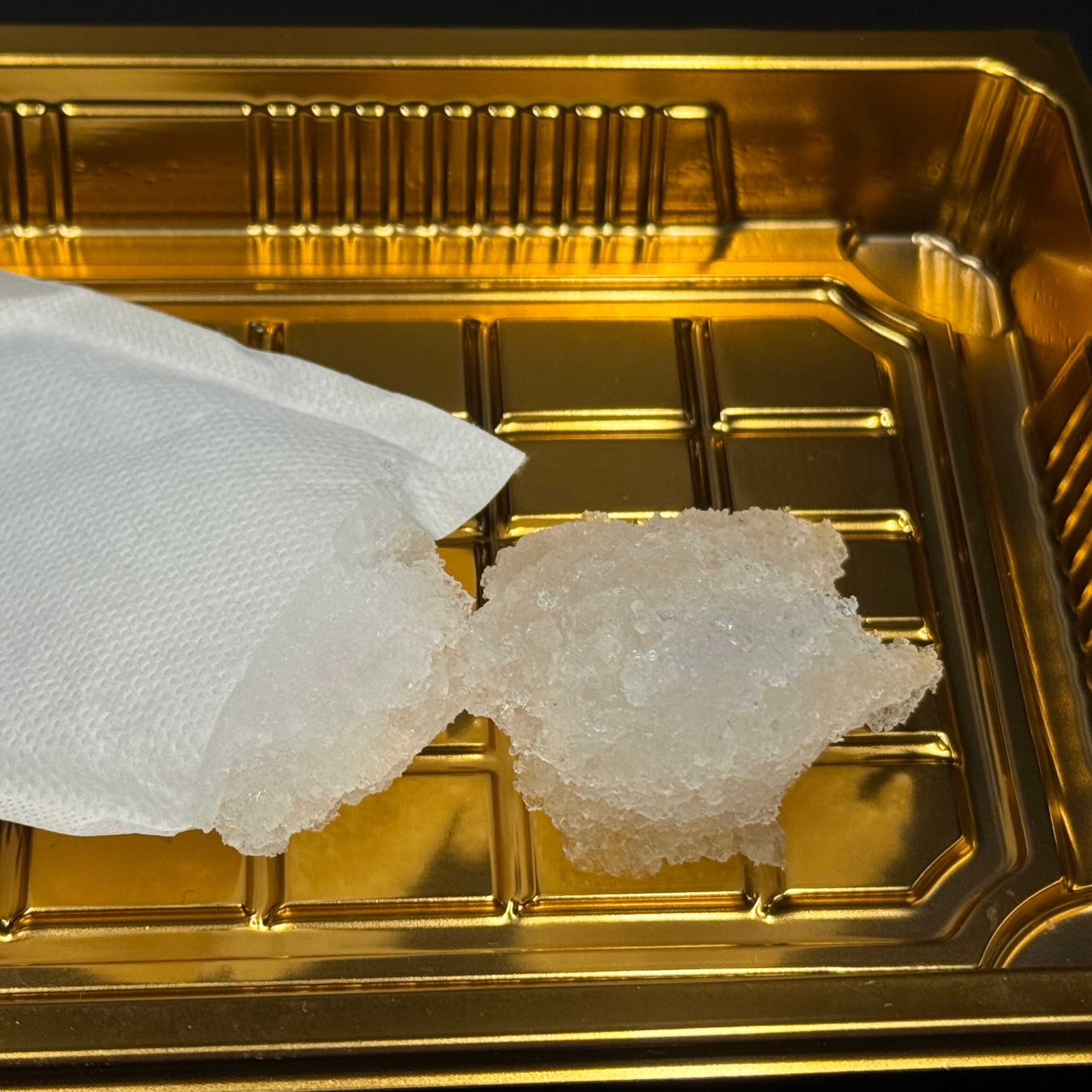What materials absorb liquids best?
Depending on the performance, it is really important to choose according to the application scenario.
The most absorbent materials are usually superabsorbent polymers (SAPs). These water absorbing pellets are able to absorb large amounts of water, up to hundreds of times their own weight. Superabsorbent polymers are widely used in various applications, such as:
Hygiene products: such as urine solidifiers, adult incontinence products and pet pads.
Agriculture: Potassium polyacrylate used as water retainers to help soil retain moisture and promote plant growth.
Medical field: used in wound care products to absorb exudate and medical waste absorption.
Construction industry: used in concrete to control water release and improve performance.
Industrial uses: such as in cables to prevent water intrusion, or in oil and gas drilling to absorb water.
Remediation of liquefied land: Remediation of liquefied land provides a new idea. The use of sodium polyacrylate gel can improve the stability and bearing capacity of the land, thereby reducing the damage to buildings caused by natural disasters such as earthquakes.
The water absorption principle of these polymers is that through their internal cross-linked structure, they form a gel after absorbing water, which enables them to retain the absorbed liquid without leakage.
Water-absorbing materials are indispensable in various aspects of life and production. Apart from common materials like toilet paper, sponge, and cotton, there are other absorbent materials worth mentioning. This article aims to provide a comprehensive overview of liquid absorbent substance and their products.

Superabsorbent Polymer
Superabsorbent Polymer (SAP), particularly sodium polyacrylate, stands out as one of the most potent liquid absorbing substance.
Water Absorption: Under ideal conditions, it can absorb thousands of times its own weight in water.
Absorption Speed: The water absorption process occurs instantly.
Moisture Retention: It effectively locks in absorbed moisture, preventing leakage even under pressure.
Types of Absorbent Materials
Physical Water Absorption: This method, akin to a molecular sieve, relies on cavities to adsorb water. However, it struggles to effectively retain water after absorption. Materials include cotton, toilet paper, sponge, and activated carbon.
Chemical Water Absorption: Chemical absorbent materials undergo reactions with water to absorb it rapidly. However, they typically cannot be reused after absorption. Examples include calcium oxide, anhydrous calcium chloride, and soda-lime.
Polymer Absorbent Material: Polymer absorbent materials combine physical and chemical methods to absorb water. They achieve this through a high concentration of hydrophilic groups and molecular sieves, allowing repeated water absorption. Examples include polyvinyl alcohol, sodium polyacrylate, and potassium polyacrylate.
Top 5 Water Absorbent Materials
1. Sodium Polyacrylate
Sodium polyacrylate, a functional polymer material, can absorb water up to several hundred times its weight. Its advantages include:
High Absorption: It can absorb hundreds to thousands of times its weight in water.
Adjustable Absorption Speed: Production processes can control the absorption speed for specific purposes.
Non-Toxic and Biodegradable: It does not produce heat or toxic substances during water absorption and can decompose naturally.
2. Potassium Polyacrylate
Potassium polyacrylate boasts a water absorption rate of over 500% of its weight. Its key features include:
High Absorption Capacity: It can retain large amounts of water, aiding soil moisture levels.
Moisture Retention: Once absorbed, it effectively retains moisture, forming a gel-like substance.
Versatile Applications: Used in agriculture, personal care products, food packaging, medical applications, and construction.
3. Anhydrous Calcium Chloride
With a water absorption rate exceeding 300% of its weight, anhydrous calcium chloride is widely utilized in various applications, including desiccation and dehumidification.
4. Calcium Oxide
Calcium oxide, with a water absorption rate of about 35% of its weight, is formed through the thermal decomposition of calcium carbonate-containing materials. It is highly effective in desiccation processes.
GELSAP’s products play crucial roles in various industries due to their exceptional water-absorbing properties. These materials solutions for applications such as agriculture and in hygiene products, where they ensure superior absorbency.
Additionally, they are widely used in environmental protection, particularly in spill containment and waste management, as well as in the production of superabsorbent polymers for consumer goods.
GELSAP’s expertise in developing these materials highlights their significance in advancing product performance and sustainability across multiple sectors.
5. Gel Sheet: The Future of Liquid Absorption

Soft. Flexible. Ultra-Absorbent.
Say goodbye to soggy paper towels and underperforming cloths. Our next-generation gel sheet combines the best of both worlds—the flexibility of fabric and the superior absorbency of hydrogels—offering an innovative solution for liquid cleanup in kitchens, hospitals, labs, and beyond.
Key Benefits
-
3x More Absorbent
Absorbs over three times more water-based liquid than standard paper towels of the same size. -
Soft & Flexible
Unlike conventional hydrogels, our gel sheet remains soft, foldable, and cuttable even when dry—just like cloth. -
Fast & Clean Performance
Soaks up 25 mL of spilled water in just 20 seconds with no dripping. Also effective on viscous liquids such as syrup and blood. -
Superior in Medical Use
Absorbs nearly 40 mL of blood in 60 seconds, outperforming gauze, sanitary pads, and sponges by over 2x—perfect for surgeries, wound dressing, or menstrual care. -
Long Shelf Life
Stays stable and flexible for over one year under normal conditions.
How It Works
Through a unique process involving foam formation, UV curing, and flexible drying, the gel sheet develops a porous, sponge-like structure. This structure traps and retains liquids effectively, without becoming stiff or brittle.
Applications
-
Kitchen spill cleanup
-
Medical and surgical fluid absorption
-
Emergency wound care
-
Laboratory and industrial environments
-
Future potential: reusable versions and oil-absorbent gel sheets
A Smarter Way to Soak
The gel sheet is more than just an upgrade—it’s a reimagining of what absorbent materials can do. Whether it’s cleaning up everyday messes or managing critical fluid spills, this advanced material is built for performance, durability, and real-world practicality.







